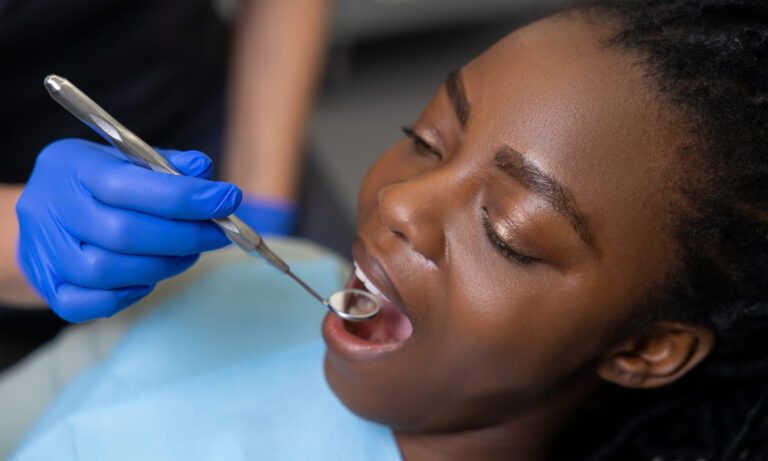Our teeth can’t repair themselves… but what if they could? The future of dentistry lies in the exciting field of regenerative medicine, where stem cell research is delving deep into the possibility of restoring damaged teeth with ‘living fillings’. But how far are we from ditching fillings for specialized tooth restoration? While the research is scientific fact, getting a “living filling” from your dentist is still science fiction…for now.
Featured experts
- Victoria Veytsman, DDS is a cosmetic dentist based in New York
- Salvator La Mastra, DDS is a cosmetic dentist based in Dallas, Texas
Stem cells for “living fillings”
“I find this field really exciting,” says New York cosmetic dentist Victoria Veytsman, DDS. “The field of tissue engineering and regenerative medicine in dentistry is truly at the forefront of healthcare.”
Stem cells are those extremely useful specialized cells (found in adult body tissues and embryos) that can be made to become many different types of cells and can self-replicate. This makes them extremely useful in regenerative medicine, where the goal is to engage the body’s repair processes to handle damaged, diseased, or otherwise diseased tissue. According to California Institute for Regenerative Medicinethe most commonly used stem cell-based therapy is for bone marrow transplants.
“When it comes to filling a cavity with them, stem cells alone are not enough to complete the tooth restoration process,” explains Dallas, Texas cosmetic dentist Salvator La Mastra, DDS. “They would need a framework of some kind to shape themselves the right way.”
Dr. Veytsman explains that current research focuses on creating this context, creating a kind of “living filler.”
“We don’t want the enamel to grow in a petri dish. We want it to grow into your tooth,” says Dr. Veytsman. “So the process requires a scaffold or matrix to support that growth.”
Cavity Repair Now
When a tooth develops a cavity, the first step is to remove the decay and stop the decay process. “Cavities are caused by bacteria,” explains Dr. La Mastra. “These acid-producing bacteria are what cause tooth decay, which is the cavity itself and tooth decay. Essentially, this is necrotic tissue that we have to pierce.”
Then you have to fill in what is missing. “We do things like crowns and fillings to replace the primary structure that is lost or worn away,” explains Dr. Veytsman. “It’s called restorative dentistry because we’re trying to restore what’s been lost.”
These fillings are made of amalgam (a mixture of metals) or composite resin fillings (of polymers and glass particles) and we know that they are safe, functional and will not disintegrate in the future. This is something that cannot be said about these “live fillings”.
“One thing about today’s implants and fillings is that we know they won’t develop cavities afterwards,” says La Mastra. “There are complications that could arise from the regenerative method that could cause more than just cosmetic results. Your bite can also be affected.”
The Future of Dentistry
“I think we’re just at the beginning of this technology,” says Dr. Veytsman. “But it certainly has the potential to change the way we approach cavities in the coming years.”
Stem cells could also be used outside of “living fillings” to benefit oral health. In addition to repairing enamel, stem cells could be used to encourage dentin growth, restore pulp, and even regenerate lost gum tissue.
“You see the rise of stem cell banking now for these purposes,” explains Dr. Veytsman. “Harvesting and storing stem cells for future applications and for use as a preventive measure is growing in popularity.”
“Living Fillings” is science fiction for now
“I think we are many decades away from the transition to regenerative medicine in dentistry,” says La Mastra. “I already have patients asking me if they can just pull their tooth back out, and we’re hardly able to do that.”
While “living fillings” won’t be making their way into your dentist’s office anytime soon, there’s still reason to be excited.
“The advent of AI technologies is really accelerating this research,” says Dr. Veytsman. “And it leaves us asking a lot of questions about potential applications. Can regenerative medicine address prevention? Can it help stop decay in its very early stages? We’re still so early in this process, but AI and regenerative medicine are really at the forefront of healthcare right now.”


